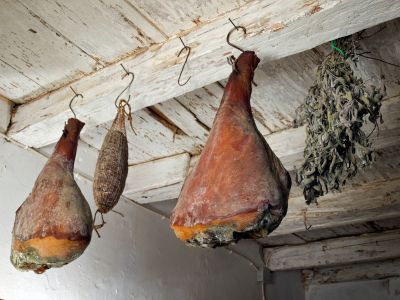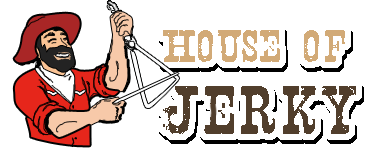Jerky in the New World
Records reveal that jerky was first introduced by the South American (Peru) native tribe called the Quechua (originally part of the ancient Inca Empire) as early as 1550. The product was known back then as Ch’arki. The process method was to cut boned and defatted meat (deer, elk, or buffalo) into quarter-inch slices, which were then rubbed aggressively with salt. This salted meat was then rolled up in the animal’s hide for ten or twelve hours for it to absorb the salt and release some of its natural juices. This product was then hung in the sun to dry or even smoked over fires, and finally tied up into convenient bundles for transportation. This Ch’arki product was created as the first known methods to preserve excess game after large successful hunts.
In South America, where there has been a plenitude of meat for hundreds of years, simple drying traditions survived, at least among the poor.
The Native Americans on the arid southern borderlands sun-dried venison and buffalo calling it tassajo, which is made with strips of meat dipped in maize flour, dried in the hot sun and wind, then tightly rolled up into balls to be carried easily on journeys.
North American Cree Indians mixed berries and suet (fat) with pounded cooked red meat and pressed into concentrated small cakes to make what is called pemmican. Today’s “pemmican” recipe is actually now known as “Kippered”. It’s a chopped and formed product, placed in a casing and commonly confused with beef jerky.
Biltong is a rich inheritance from pioneering South African forefathers who sun dried meat during their trek across the African Subcontinent. African folklore has it that migrating African tribesmen, herding their stock, would place strips of venison under the saddles on their horses as the chaffing would tenderize the meat and the sweat of the animals would spice it! As biltong evolved, seasoning became a dramatic blend of vinegar, salt, sugar, coriander and other spices. These were in abundance in the then Cape Colony, as the French Huguenots produced wine and vinegar from their grape crops and the colony was the halfway stop for seafarers plying the spice routes of the East.
Various brine recipes and marinades were created and have been handed down for generations.
The Indians and early settlers made jerky primarily from deer, elk or buffalo using salt (to prevent spoilage) and whatever spices they had. The meat was dried (cured) primarily in the sun. When the Spanish picked it up, the name eventually became known as Charqui. Most travelers preferred to actually pound the charqui vigorously between two large stones and then boil it in water before eating.
During the days of ocean exploration and colonization, the Spanish sailors would stock the islands in the pacific with goats. On subsequent or return journeys the sailors would call in and restock their meat supplies from these goats, what couldn’t be eaten would be cut into strips and hung from the rigging of their ships and dried.
When the Spanish Conquistadors invaded the America’s naturally they carried their dried meat with them. While the natives of North America of course had been drying meat as well, when the invaders arrived and were seen to use a similar process, the natives adopted the Spanish term, only adding their accent, so it became “jerky”.
North American Pioneers further evolved the process. Folks who ate jerky were generally travelers, explorers, cowboys, and Native Americans. The simplest method for drying meat was to string it on ropes and then hang it on the outside of the wagon cover. There it would soak up the hot sun for two or three days until it was cured; then it was packed in bags and stored for future use. The “hanging up method”, while simple, meant that the meat picked up all the dust and debris from the air. Still, when “hunger stares one in the face one isn’t particular”.
Another way of preparing jerky was to build a scaffold to support the meat over a slow fire and then to smoke the strips.
The meat is sliced thin and a scaffold prepared by setting forked sticks in the ground, about three feet high, and laying small poles or sticks crosswise upon them. The meat is laid upon those pieces, as a slow fire built beneath; the heat and smoke completes the process in half a day; and with an occasional sunning the meat will keep for months.
While the smoking method required a stopover, as the twentieth-century rolled around, a new awareness for disease and germs became prevalent, and smoking was recognized as much safer than air-drying.

